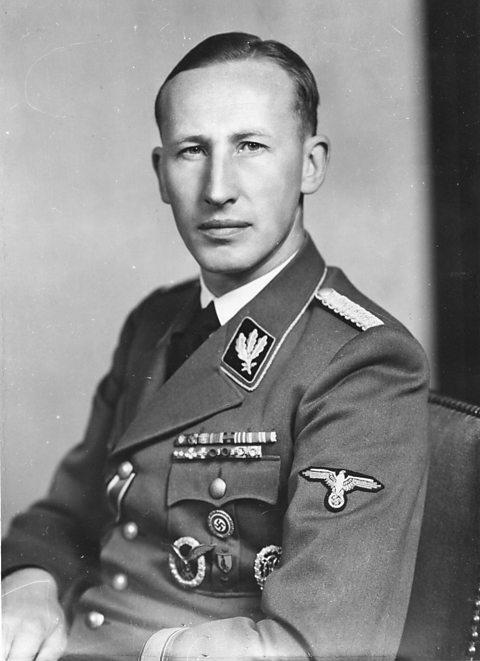Escalation of racial persecution leading to the Final Solution
The outbreak of World War Two spelt disaster for those Jews who had remained in Germany and it also extended the NazisвҖҷ persecution to those Jews living in territories invaded and occupied by the German army and its European allies. The eventual extermination of up to 6 million European Jews by the Nazis proceeded in three phases:
Phase one - Polish ghettos
The German conquest of Poland in autumn 1939 brought three million more Jews under Nazi control. Polish Jews were confined to ghettos and camps in terrible conditions, where hundreds of thousands died of starvation and disease.
Hitler is believed to have given the order to begin the attempted extermination of EuropeвҖҷs 11 million Jews in 1941. This so-called вҖҳFinal SolutionвҖҷ to the question of what to do with EuropeвҖҷs Jews led to phase two.
Phase 2 - mass killings begin
During the German invasion of the USSR (June 1941), four specially created SS units called EinsatzgruppenGerman task forces that acted as mobile killing units during the German invasions of Poland (1939) and the Soviet Union (1941). followed behind the German army. Their task was to round up Jews, as well as communist officials and Russian army officers, and execute them. The victims were taken to the edge of towns and villages, forced to dig mass graves and then shot and buried in huge numbers. By the end of 1941, 500,000 Jews had been killed in this way and in total the victims of einsatzgruppen numbered around 1.2 million.
These mass killings were expensive and time consuming. The need to make the extermination process more efficient led to phase three.
Phase three - extermination camps

On 20 January 1942 Reinhard Heydrich, the head of the SicherheitsdienstThe intelligence agency of the Nazi Party in Nazi Germany. Also known as SD or Security Service., held a conference in the Wansee suburb of Berlin. At this meeting it was agreed that all Jews under German occupation would be brought to Poland, where those fit enough would be worked to death and the rest exterminated. This led to the horror of the Nazi death camps, six of which were built specifically to murder those brought to them.
The biggest and most notorious camp was Auschwitz-Birkenau, where 2.5 million Jews were murdered. Jews arrived at the camps on trains, where they were separated into two groups: those fit enough to work and those to be killed immediately вҖ“ usually women, children and the elderly. The latter group were ushered into what they thought were showers, where they were gassed to death using pellets of cyanide known as Zyklon B.
Altogether, it is thought around six million Jews were murdered during the Holocaust, as well as several million others, including GypsyA member of a travelling community usually with dark skin and hair., homosexuals, Soviet prisoners of war, Jehovah's WitnessesMembers of a Christian-based religious movement founded in the USA in the late 19th century. and other вҖҳundesirablesвҖҷ. Up to 88 per cent of Polish Jews were killed and Jews from all over Nazi-occupied Europe were sent to the camps.
Auschwitz also had a huge forced labour camp attached to it, called Auschwitz-Monowitz, or Auschwitz III. Here many Jews and other groups who had not been sent immediately to the gas chambers would have worked in horrific conditions in a variety of factories. When they became too weak to work they would then be sent to the gas chambers.
As Russian forces advanced towards Auschwitz at the end of the war, the Nazis tried to destroy the gas chambers and crematoria. Over 60,000 prisoners were marched west from Auschwitz towards Germany, in what became known as the death marches.